-
 Bitcoin
Bitcoin $83,733.4061
-1.29% -
 Ethereum
Ethereum $1,594.3479
-1.74% -
 Tether USDt
Tether USDt $1.0000
0.01% -
 XRP
XRP $2.0826
-1.94% -
 BNB
BNB $581.9915
-0.41% -
 Solana
Solana $126.1154
-2.12% -
 USDC
USDC $0.9999
-0.01% -
 TRON
TRON $0.2513
0.07% -
 Dogecoin
Dogecoin $0.1553
-2.14% -
 Cardano
Cardano $0.6128
-3.26% -
 UNUS SED LEO
UNUS SED LEO $9.3174
-1.22% -
 Chainlink
Chainlink $12.3521
-1.81% -
 Avalanche
Avalanche $18.8671
-5.22% -
 Stellar
Stellar $0.2363
-1.27% -
 Toncoin
Toncoin $2.9018
0.31% -
 Shiba Inu
Shiba Inu $0.0...01172
-0.86% -
 Sui
Sui $2.0951
-3.63% -
 Hedera
Hedera $0.1580
-4.98% -
 Bitcoin Cash
Bitcoin Cash $319.4231
-0.81% -
 Litecoin
Litecoin $76.0657
-1.99% -
 Polkadot
Polkadot $3.5459
-2.73% -
 Dai
Dai $1.0000
0.01% -
 Bitget Token
Bitget Token $4.2560
-1.12% -
 Hyperliquid
Hyperliquid $15.2255
-5.33% -
 Ethena USDe
Ethena USDe $0.9992
0.01% -
 Pi
Pi $0.6236
-15.50% -
 Monero
Monero $216.8844
2.23% -
 Uniswap
Uniswap $5.2307
-1.66% -
 OKB
OKB $52.1135
1.06% -
 Pepe
Pepe $0.0...07120
-2.00%
How to calculate the return on investment (ROI) of mining equipment?
To calculate ROI for crypto mining, consider equipment costs, potential earnings, and operational expenses like electricity and maintenance.
Apr 09, 2025 at 03:49 am
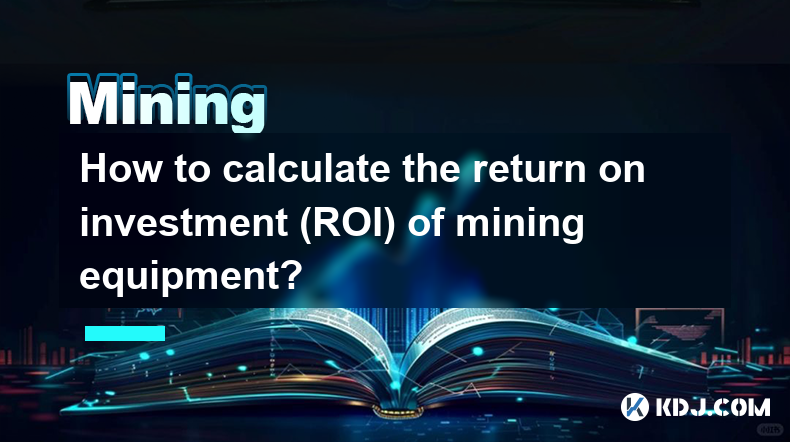
Calculating the return on investment (ROI) of mining equipment is a crucial step for anyone considering entering the cryptocurrency mining industry. This process involves understanding the costs associated with the equipment, the potential earnings from mining, and various operational expenses. By accurately calculating ROI, miners can make informed decisions about the profitability of their investments.
Understanding the Costs of Mining Equipment
The first step in calculating ROI is to determine the total cost of the mining equipment. This includes not only the initial purchase price but also any additional expenses such as shipping, taxes, and installation costs.
- Purchase Price: The cost of the mining rig itself, which can vary widely depending on the type and efficiency of the hardware.
- Shipping and Handling: These costs can add a significant amount to the overall expense, especially if the equipment is being imported.
- Taxes: Depending on your location, you may need to account for sales tax or import duties.
- Installation Costs: Some mining rigs may require professional installation, which incurs additional costs.
Calculating Potential Earnings from Mining
Once the costs are known, the next step is to estimate the potential earnings from mining. This involves understanding the hash rate of the equipment, the current and projected difficulty of the cryptocurrency being mined, and the block reward.
- Hash Rate: This is the speed at which the mining equipment can process transactions. A higher hash rate generally leads to higher earnings.
- Difficulty: The difficulty of mining a cryptocurrency adjusts periodically to maintain a consistent block time. Higher difficulty means more computational power is needed to mine a block.
- Block Reward: The amount of cryptocurrency awarded for successfully mining a block. This can change over time, as seen with Bitcoin's halving events.
To calculate potential earnings, you can use mining calculators available online. These tools take into account the hash rate, difficulty, and block reward to provide an estimate of daily, weekly, or monthly earnings.
Accounting for Operational Expenses
Operational expenses are another critical factor in calculating ROI. These include electricity costs, maintenance, and any other ongoing expenses related to running the mining equipment.
- Electricity Costs: Mining consumes a significant amount of electricity. The cost per kilowatt-hour (kWh) in your area will directly impact your ROI. You can calculate this by multiplying the power consumption of your mining rig (in watts) by the number of hours it runs per day, and then by the cost per kWh.
- Maintenance: Over time, mining equipment may require repairs or replacement parts. Regular maintenance can extend the life of the equipment but also adds to the operational costs.
- Cooling: Mining rigs generate a lot of heat, and effective cooling systems are necessary to prevent overheating. The cost of these systems should be included in your calculations.
Calculating ROI
With all the costs and potential earnings in hand, you can now calculate the ROI. The basic formula for ROI is:
[ \text{ROI} = \frac{\text{Net Profit}}{\text{Total Investment}} \times 100 ]
Where:
- Net Profit is the total earnings from mining minus the total costs (including operational expenses).
- Total Investment is the sum of all initial and ongoing costs.
For example, if you invest $5,000 in mining equipment and operational costs amount to $1,000 per year, and you earn $3,000 per year from mining, your net profit after one year would be $2,000 ($3,000 - $1,000). Your ROI would then be:
[ \text{ROI} = \frac{2000}{5000} \times 100 = 40\% ]
Adjusting for Time and Market Conditions
It's important to consider the time frame over which you are calculating ROI. Mining profitability can fluctuate due to changes in cryptocurrency prices, mining difficulty, and other market conditions. Therefore, it's wise to calculate ROI over different time periods and under various scenarios to get a more comprehensive view of potential returns.
- Short-term ROI: This might be calculated over a few months and can be useful for understanding immediate profitability.
- Long-term ROI: This could be calculated over a year or more and helps in understanding the sustainability of the investment.
Using ROI to Make Informed Decisions
Once you have calculated the ROI, you can use this information to make informed decisions about whether to proceed with the investment. A positive ROI indicates that the investment is likely to be profitable, while a negative ROI suggests that the costs outweigh the potential earnings.
- Comparing Different Equipment: You can calculate the ROI for different types of mining equipment to see which offers the best return.
- Adjusting Operations: If the initial ROI is not satisfactory, you might consider ways to reduce costs or increase earnings, such as optimizing your mining setup or switching to a different cryptocurrency.
Frequently Asked Questions
Q: How often should I recalculate my ROI for mining equipment?
A: It's advisable to recalculate your ROI at least monthly, as cryptocurrency prices and mining difficulty can change rapidly. Additionally, recalculating after significant changes in your operational costs or equipment performance can help keep your projections accurate.
Q: Can I improve my ROI by joining a mining pool?
A: Joining a mining pool can potentially improve your ROI by providing more consistent earnings. While the individual block rewards are smaller, the frequency of receiving rewards is higher, which can help stabilize your income and reduce the risk of long periods without earnings.
Q: What are the tax implications of mining income?
A: The tax implications of mining income vary by jurisdiction. In many countries, mined cryptocurrency is considered taxable income at the time it is received. It's important to consult with a tax professional to understand your specific obligations and how they might affect your ROI calculations.
Q: How does the choice of cryptocurrency affect ROI?
A: The choice of cryptocurrency can significantly impact ROI. Different cryptocurrencies have different mining difficulties, block rewards, and market prices. For example, mining Bitcoin might offer higher potential rewards but also comes with higher difficulty and electricity costs compared to mining less popular cryptocurrencies. Evaluating these factors is crucial for accurate ROI calculations.
Disclaimer:info@kdj.com
The information provided is not trading advice. kdj.com does not assume any responsibility for any investments made based on the information provided in this article. Cryptocurrencies are highly volatile and it is highly recommended that you invest with caution after thorough research!
If you believe that the content used on this website infringes your copyright, please contact us immediately (info@kdj.com) and we will delete it promptly.
- Semler Scientific (SMLR) Agrees to Pay $29.75M to Settle DOJ Probe into QuantaFlo Marketing
- 2025-04-16 11:15:19
- 2025 California commercial salmon fishing season closed for a third year running due to dwindling fish numbers
- 2025-04-16 11:15:19
- Dogecoin (DOGE) Eyes $0.21 as Bulls Hold the Line
- 2025-04-16 11:10:13
- Despite Its Recent Rally, XRP Faces an Upward Barrier. A New Contender Is Making Waves
- 2025-04-16 11:10:13
- Bitcoin (BTC) Demonstrates Strength and Resilience as the Dollar Index (DXY) Continues Its Losing Streak
- 2025-04-16 11:05:13
- Within the fast-growing AI ecosystem, social activity is now a key indicator
- 2025-04-16 11:05:13
Related knowledge
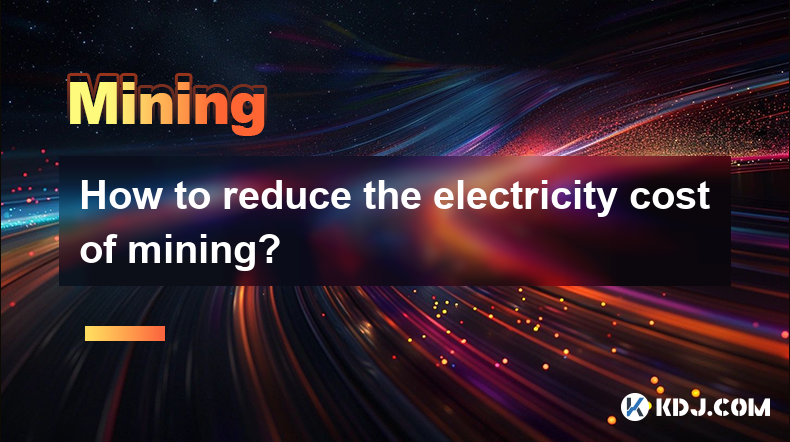
How to reduce the electricity cost of mining?
Apr 16,2025 at 08:42am
Mining cryptocurrencies, particularly Bitcoin, is an energy-intensive process that can lead to significant electricity costs. However, there are several strategies that miners can employ to reduce these expenses and make their operations more cost-effective. In this article, we will explore various methods to minimize the electricity cost of mining. Cho...
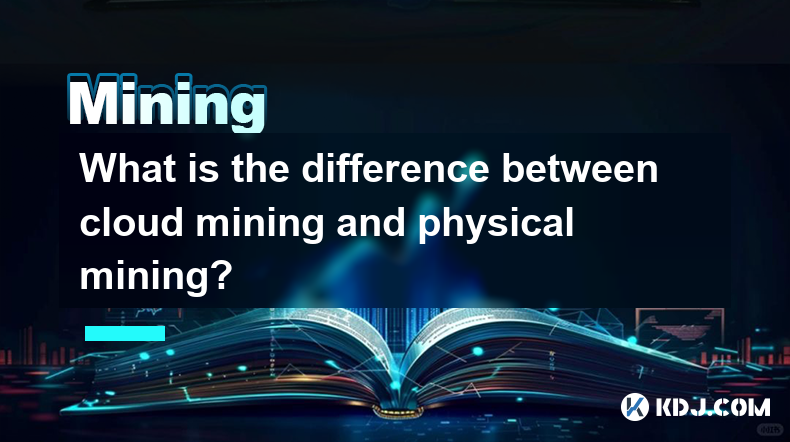
What is the difference between cloud mining and physical mining?
Apr 16,2025 at 01:49am
What is the difference between cloud mining and physical mining? In the world of cryptocurrencies, mining is the process by which new coins are generated and transactions are verified and added to the blockchain. There are two primary methods of mining: cloud mining and physical mining. Understanding the differences between these two approaches can help...
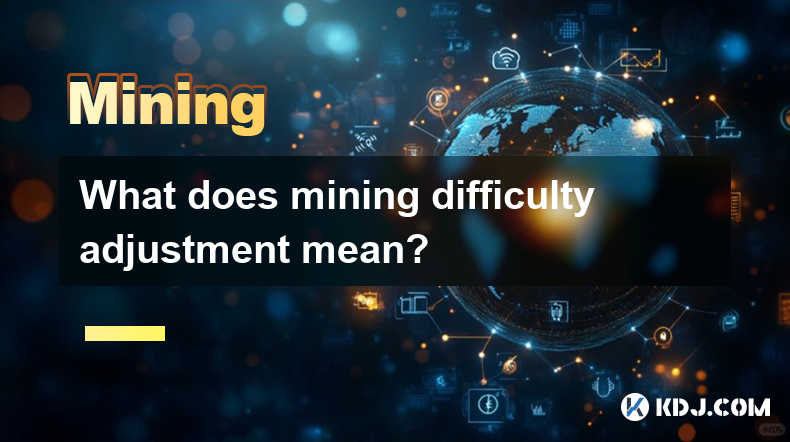
What does mining difficulty adjustment mean?
Apr 16,2025 at 12:42am
What does mining difficulty adjustment mean? Mining difficulty adjustment is a crucial mechanism in blockchain networks, particularly in Proof of Work (PoW) systems like Bitcoin. It ensures that the rate at which new blocks are added to the blockchain remains consistent, despite fluctuations in the total computational power (hash rate) of the network. T...

How to choose a suitable cryptocurrency for mining?
Apr 16,2025 at 10:15am
Choosing a suitable cryptocurrency for mining involves several considerations that can impact your profitability and efficiency. Mining cryptocurrencies can be a rewarding venture, but it requires careful planning and research. In this article, we will explore the key factors to consider when selecting a cryptocurrency for mining, ensuring you make an i...
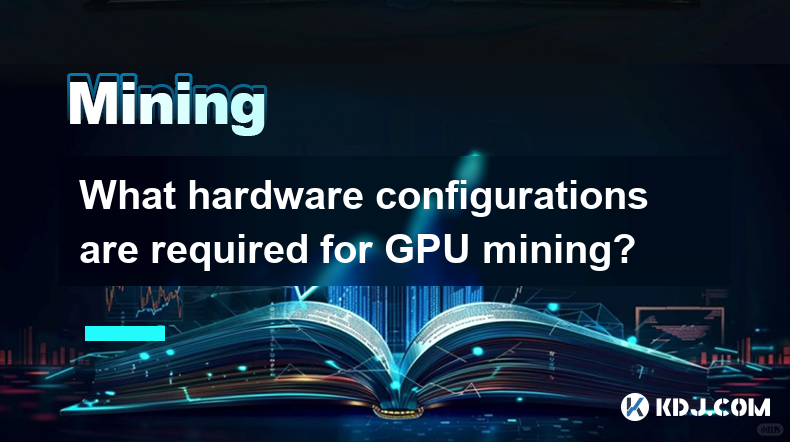
What hardware configurations are required for GPU mining?
Apr 16,2025 at 09:21am
GPU mining has become a popular method for cryptocurrency enthusiasts to mine various cryptocurrencies, such as Ethereum, Ravencoin, and others. To successfully engage in GPU mining, it is essential to understand the hardware configurations required to maximize efficiency and profitability. This article will delve into the specifics of what you need to ...
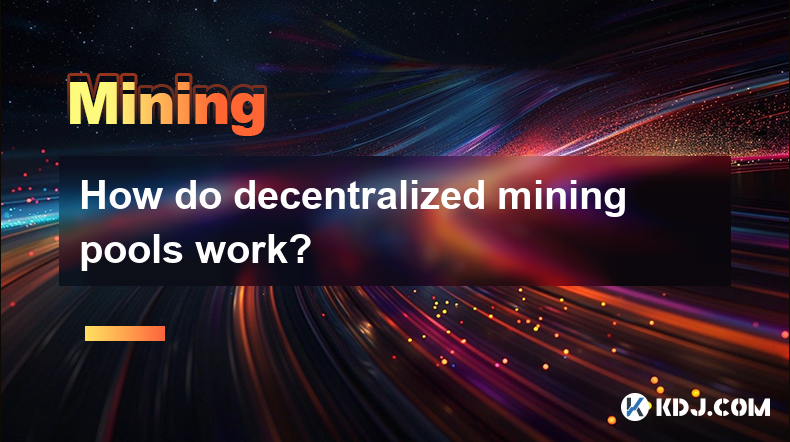
How do decentralized mining pools work?
Apr 16,2025 at 05:42am
Decentralized mining pools represent a significant evolution in the world of cryptocurrency mining, offering a more democratic and transparent approach compared to traditional centralized pools. In this article, we will explore the mechanics of decentralized mining pools, their benefits, and how they operate within the cryptocurrency ecosystem. What are...

How to reduce the electricity cost of mining?
Apr 16,2025 at 08:42am
Mining cryptocurrencies, particularly Bitcoin, is an energy-intensive process that can lead to significant electricity costs. However, there are several strategies that miners can employ to reduce these expenses and make their operations more cost-effective. In this article, we will explore various methods to minimize the electricity cost of mining. Cho...

What is the difference between cloud mining and physical mining?
Apr 16,2025 at 01:49am
What is the difference between cloud mining and physical mining? In the world of cryptocurrencies, mining is the process by which new coins are generated and transactions are verified and added to the blockchain. There are two primary methods of mining: cloud mining and physical mining. Understanding the differences between these two approaches can help...

What does mining difficulty adjustment mean?
Apr 16,2025 at 12:42am
What does mining difficulty adjustment mean? Mining difficulty adjustment is a crucial mechanism in blockchain networks, particularly in Proof of Work (PoW) systems like Bitcoin. It ensures that the rate at which new blocks are added to the blockchain remains consistent, despite fluctuations in the total computational power (hash rate) of the network. T...

How to choose a suitable cryptocurrency for mining?
Apr 16,2025 at 10:15am
Choosing a suitable cryptocurrency for mining involves several considerations that can impact your profitability and efficiency. Mining cryptocurrencies can be a rewarding venture, but it requires careful planning and research. In this article, we will explore the key factors to consider when selecting a cryptocurrency for mining, ensuring you make an i...

What hardware configurations are required for GPU mining?
Apr 16,2025 at 09:21am
GPU mining has become a popular method for cryptocurrency enthusiasts to mine various cryptocurrencies, such as Ethereum, Ravencoin, and others. To successfully engage in GPU mining, it is essential to understand the hardware configurations required to maximize efficiency and profitability. This article will delve into the specifics of what you need to ...

How do decentralized mining pools work?
Apr 16,2025 at 05:42am
Decentralized mining pools represent a significant evolution in the world of cryptocurrency mining, offering a more democratic and transparent approach compared to traditional centralized pools. In this article, we will explore the mechanics of decentralized mining pools, their benefits, and how they operate within the cryptocurrency ecosystem. What are...
See all articles























































































